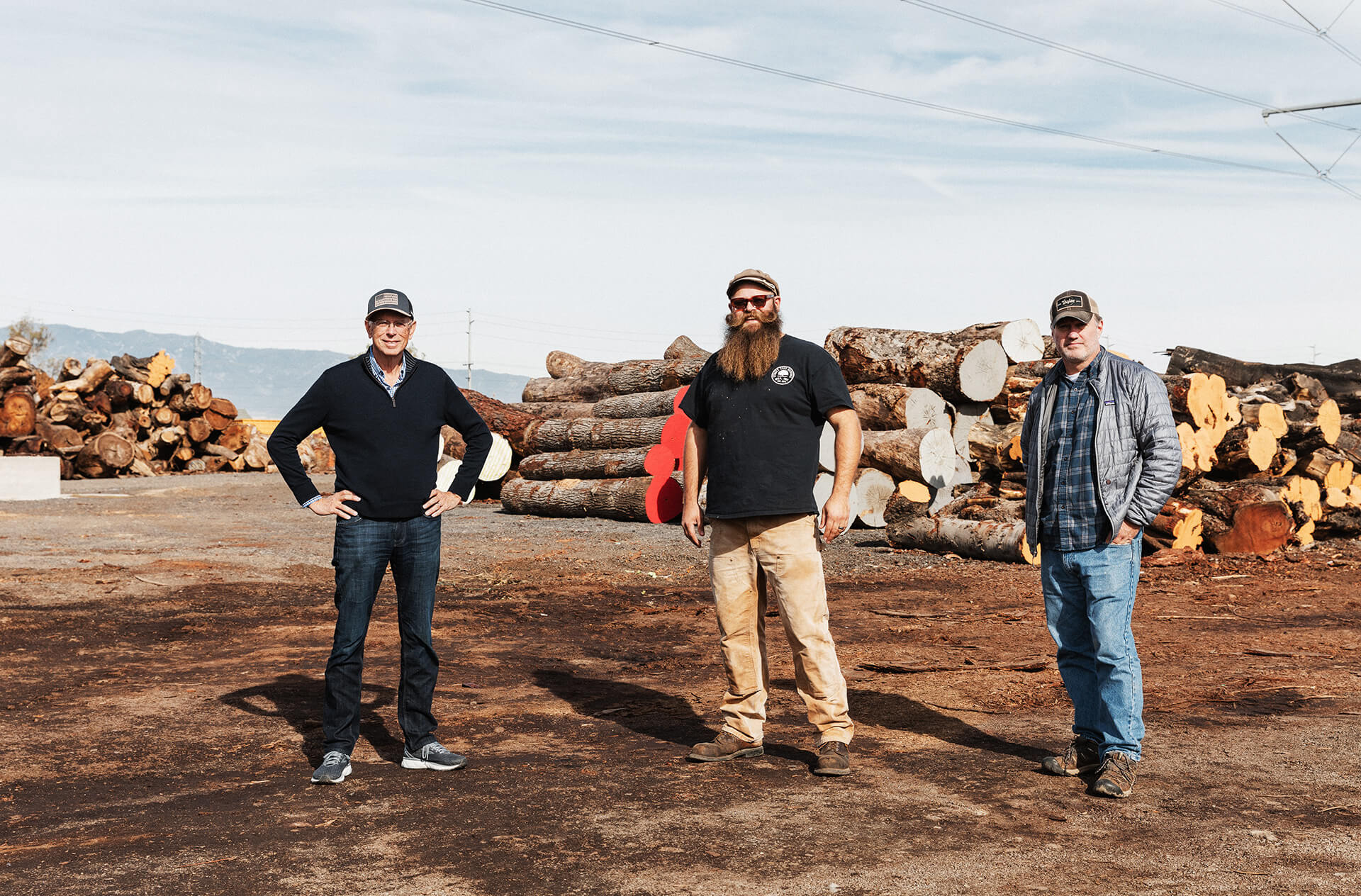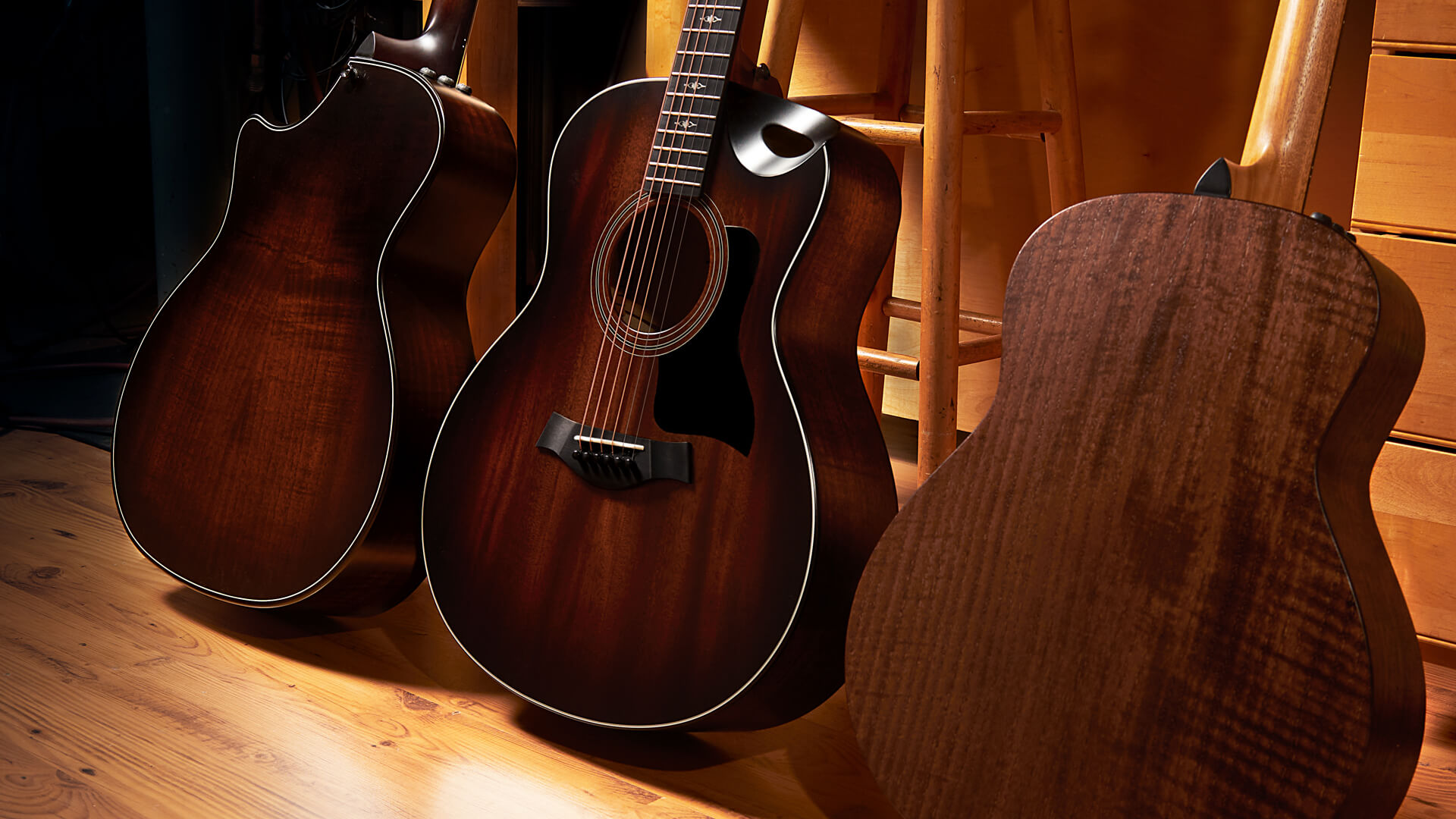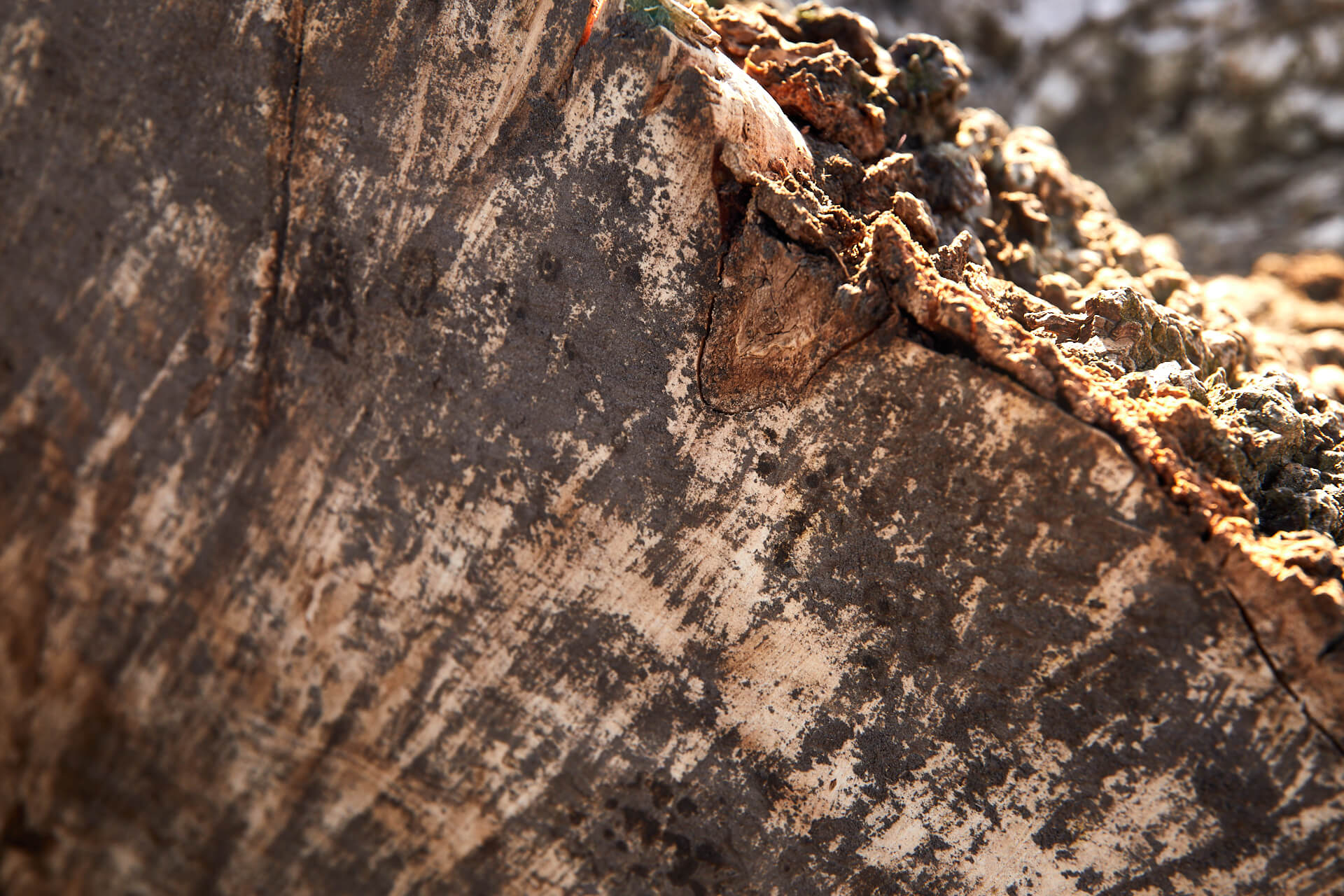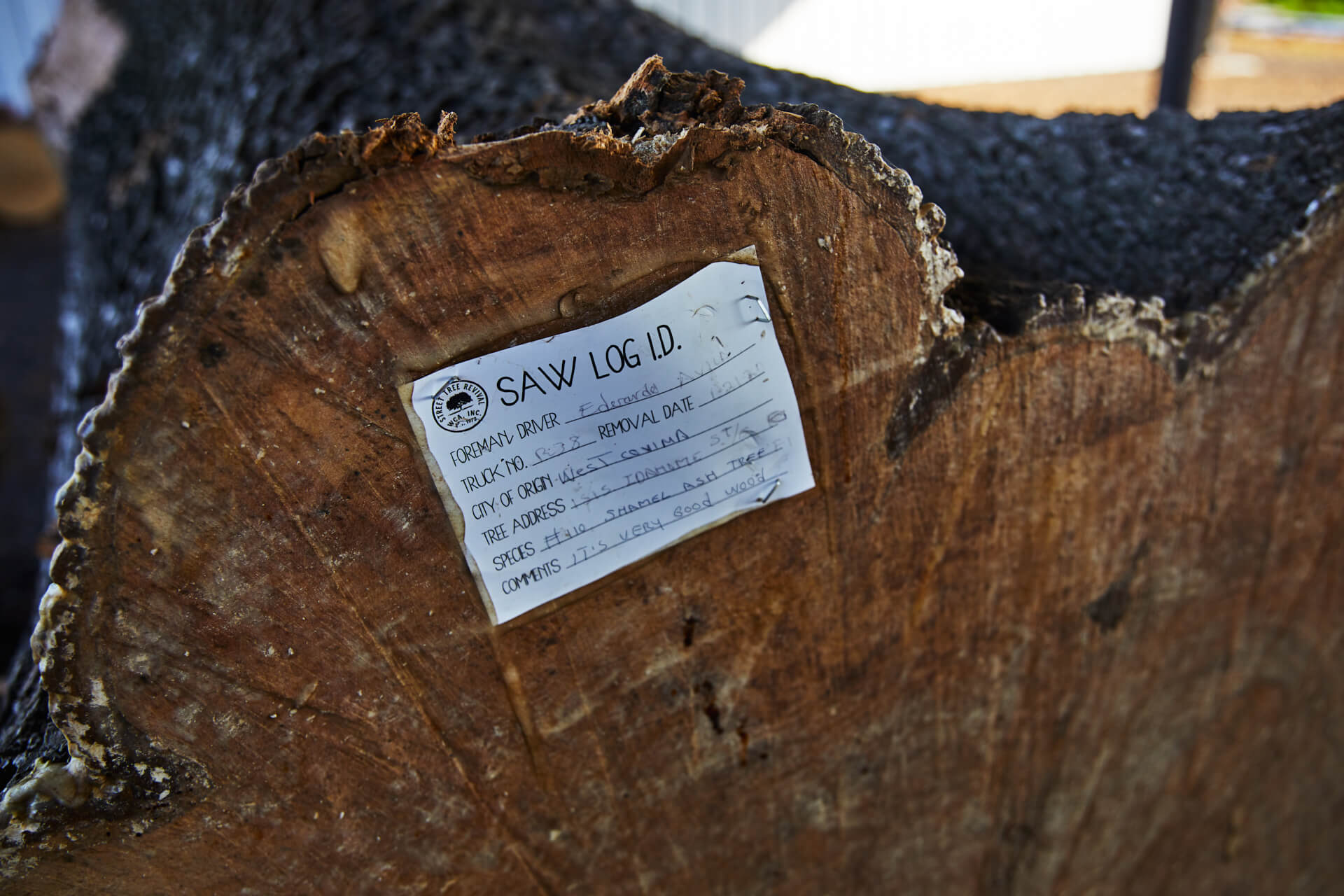Elsewhere in this edition of Wood&Steel, you’ll find stories on two new guitars made with Urban Ash™: the GT Urban Ash and the 326ce, a new Grand Symphony featuring our soundport cutaway. These guitars join the Builder’s Edition 324ce, released at the Winter NAMM Show to kick off 2020. We’re sourcing the ash, also known as evergreen or Shamel ash, from our local arborist, West Coast Arborists, Inc. (WCA), who provides professional tree maintenance and management services for nearly 300 public agencies, including cities and counties across California and Arizona.
We love Urban Ash as a tonewood. In fact, Bob Taylor has taken to calling it “the mahogany of Southern California,” but the truth is, until we embraced it, there was no cost-effective infrastructure in place to get the wood to our factory with the quality, quantity and predictability needed to make it work. Shamel ash trees are scattered across the vast landscape of Southern California, on both public and private lands, governed by a patchwork of municipalities, each with their own subset of jurisdictions. When a city needs to remove a tree, an arborist safely takes it down, cleans up the mess and plants another if instructed. The entire system is designed to dispose of the remains as quickly and cheaply as possible. It sounds logical, unless you might want to make something out of the wood.
Of course, some small woodshops and artisans have long acquired urban wood through informal networks and personal relationships, but it’s unpredictable, and the vast majority of good wood is disposed of before anyone knows it was even there. In the grand scheme of things, shopping for urban wood to build a dedicated model of guitar is like looking for needles in a field of haystacks.
Why? Simply put, the practice and infrastructure of removing city trees evolved with little serious consideration for the need to identify usable wood or to make it available for woodworkers and manufacturers. With so many agencies, jurisdiction and lawyers, it’s just simpler to get rid of it.
Several years ago, a beautiful black acacia tree (a.k.a. Tasmanian blackwood) was being removed from a school about a block from Andy Powers’ house in Carlsbad, California. Andy being Andy, walked over and noticed a “very special” section of the lower trunk that had beautiful coloring, and from the area where the bark had chipped away, he could see some curly figure. The crew was cutting the tree into smaller, manageable sections for disposal and chipping up the branches when Andy asked if he could have the piece he’d seen, pointing to his woodshop and offering to pick it up himself with his little Kubota tractor. Not surprisingly, he was politely denied. That wood was all eventually mulched. I’ve heard that story more than once, and I can always hear the slight tinge of pain in Andy’s voice when he thinks about the guitars he would have built.
The Perfect Partner
For a manufacturer like Taylor Guitars, complications surrounding the sourcing of urban wood in any meaningful way have long been a minor frustration. Bob Taylor has been building guitars for a long time, and when it comes to urban trees that have already been cut down, I’ve heard him say more than once, “The moment they know you want it, you can’t have it.”
But as it turns out, there was one place, and one company—WCA—where it all might work for Taylor to build a dedicated line of guitars using urban wood. And ironically, it was right next door to the factory. In fact, on some days I can look out my office window and see their trucks go by. WCA is our local arborist here in El Cajon. They also deal in volume, caring for over six million trees across the state. They have infrastructure, plus a tree inventory software program that shows the species and maintenance records of every tree where they work. As I came to learn, they also had a rather unique log sort yard in Ontario, California, about 120 miles from the Taylor factory. Most importantly, they were also willing to think outside the box.
Until about the year 2000, most of the wood that came to the Ontario yard was sold for firewood or landfilled, but to get ahead of state regulations and offset disposal costs, WCA began separating wood by species as it came in. In Ontario, they had the luxury of space. In time, they began sealing the ends of large, quality logs to prevent cracking, and they bought a Wood-Mizer portable sawmill, launching an urban wood recycling initiative dubbed Street Tree Revival focused largely on selling live edge slabs and dimensional lumber.
Still, the first time anyone from Taylor Guitars stepped foot on that property, only bits and pieces of a supply chain capable of turning discarded city trees into a Taylor guitar existed. WCA might have a sophisticated operation to plant and care for trees, and to safely remove them when called upon, but in the disposal yard they had only basic milling capacity and the ability to deal with urban wood peculiarities such as pieces of metal fence line or nails that are occasionally embedded within city trees. And although they had software to track trees across their network, only trees within a 25- to 50-mile radius were brought to Ontario. It simply didn’t make economic sense to haul trees farther just to turn them into firewood, and they already had more rough slabs than they could sell.
Could this infrastructure really supply a dedicated line of Taylor guitars? Could it be sustained? A venture capitalist might have walked away, but to us, if it couldn’t work here, it couldn’t work anywhere.
To be clear, people have been running urban wood businesses for decades, but I think it’s fair to describe them as provincial enterprises—persistent but small-scale and existing in relative isolation from one another. What we were proposing was something different. Several things would need to be worked out as we went, but in life things tend to happen because people decide to make them happen. And in this case, Bob Taylor, WCA founder Pat Mahoney, and Steve McMinn from Pacific Rim Tonewoods decided to make it happen.
Think of guitars made with urban wood like the early days of solar panels. For decades, solar panels really didn’t make economic sense, but nonetheless people bought them because they felt it was the right thing to do. Much of the manufacturing momentum was fueled by subsidies and grants. Over time the technology improved, problems were overcome by innovation, supply chains evolved, and a viable manufacturing infrastructure was created. Today, I see solar panels on roofs all over Southern California, and they are saving people money and reducing our consumption of fossil fuels. It’s all come a long way since the University of Delaware created Solar One, one of the first solar buildings, in 1973. We’re not asking for subsidies or grants to build guitars, but some interesting things are happening nationally in regard to planting urban trees, creating jobs and providing environmental services.
Grants to Plant Urban Trees
When we introduced the Builder’s Edition 324ce at Winter NAMM 2020 in Anaheim, I wrote in Wood&Steel about the importance of urban trees and the need to plant more. I also mentioned our interest in being a test case, helping to create a circular economy that generates jobs and supports the planting, maintenance, disposal and repurposing of urban trees. It’s obviously still the very early days, but with the release of the 326ce and the GT Urban Ash guitar, we wanted to share some progress.
Here in California, the Department of Forestry and Fire Protection (CAL FIRE) has an Urban and Community Forestry Program that provides technical assistance and administers grants to local governments and non-profit groups across the state to optimize the benefits of urban forests. Funded projects are designed to synergize with the California Global Warming Solutions Act of 2006. Think of things like carbon sequestration, environmental services such as clean air and water, storm water management, reduced energy use, public health, and initiatives like urban revitalization and producing useful products like cleaner energy and quality wood. If you like any of these things, then plant and care for urban trees.
And thanks to Mike Palat, the San Diego Regional Manager at WCA, Taylor Guitars is now part of two such CAL FIRE grants. Mike was one of the first people I met when Bob asked me to start looking at urban trees, and he helped educate me on the issues, including the Kafka-esque labyrinth of associated politics that comes with it. Mike and I are now on the board of Tree San Diego, a non-profit dedicated to increasing the quality and density of San Diego’s urban forest. There are similar organizations across the US and, increasingly, worldwide.
This year, Tree San Diego received a CAL FIRE grant to plant 1,500-plus trees on residential private property in disadvantaged communities in San Diego County, including reservation land in East County, in 2021. The project is called Branch Out San Diego and utilizes aerial imaging data provided by San Diego-based FireWatch, who is really pushing the envelope with aerial imagery to quantify and monitor the benefits of trees and urban forests. Local partners Mundo Gardens and One San Diego will help with community outreach, education and planting events, ensuring that once planted, trees are watered, mulched and monitored. Taylor staff will join in, and we will help get the word out. More on this when the time comes.
Taylor Guitars is also involved in a second CAL FIRE grant that was awarded to the California Urban Forests Council, a group that WCA has long been involved with. The AMPlifying California’s Urban Forestry Movement grant seeks to improve and diversify urban forests in disadvantaged and low-income communities throughout California by planting some 2,000 trees in cities statewide in 2021. The name “AMPlifying” was inspired by Taylor’s commitment to support the project. We’ll be talking more about this one too as details emerge, but confirmed project cities include: Chino, Concord, Glendora, Livermore, Orange, Palm Springs, Pico Rivera, Paramount, Santee, Tracy and Woodland. Both of these grants emphasize planting and caring for trees in disadvantaged and low-income communities because it’s just a fact that well-off neighborhoods tend to have many trees (and all the aforementioned associated benefits), and less-well-off neighborhoods don’t.
As mentioned in a previous article, it’s important to understand that more trees ultimately means greater throughput and more trees that will reach end-of-life in the future. It’s simple math, and even today, many arborists and city officials are struggling with disposal costs. Figuring out a circular economy that creates jobs and supports the planting, maintenance, disposal and repurposing of urban trees is going to be increasingly important. Taylor Guitars will have a bit more to say about this, too, in future editions of Wood&Steel. As Bob likes to say, “Invest in the inevitable.”
Scott Paul is Taylor’s Director of Natural Resource Sustainability.



